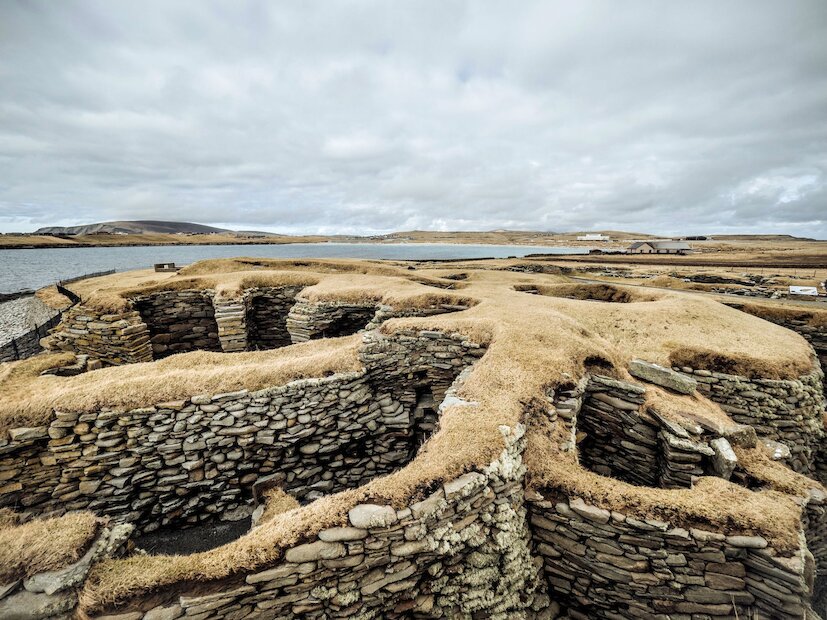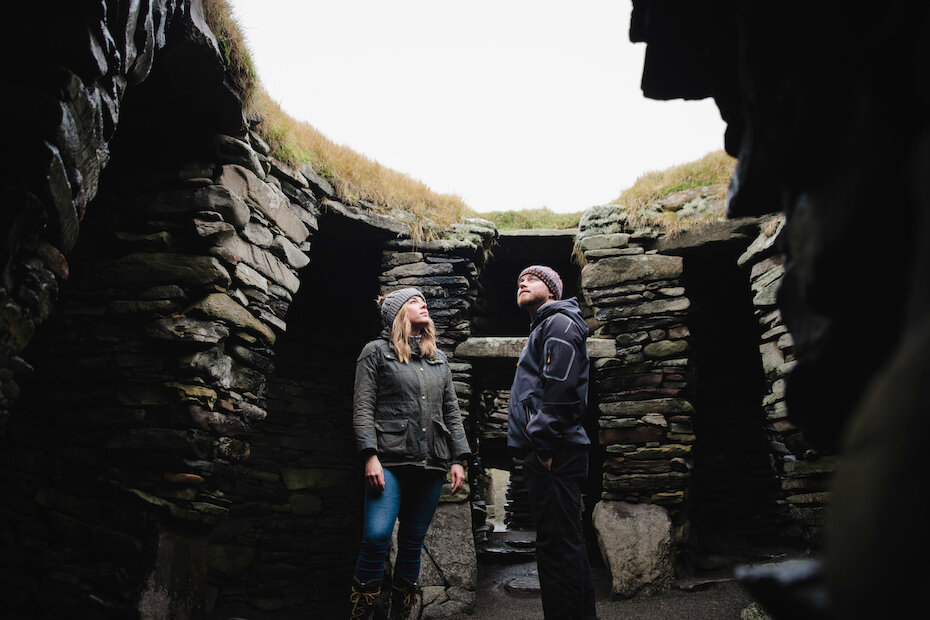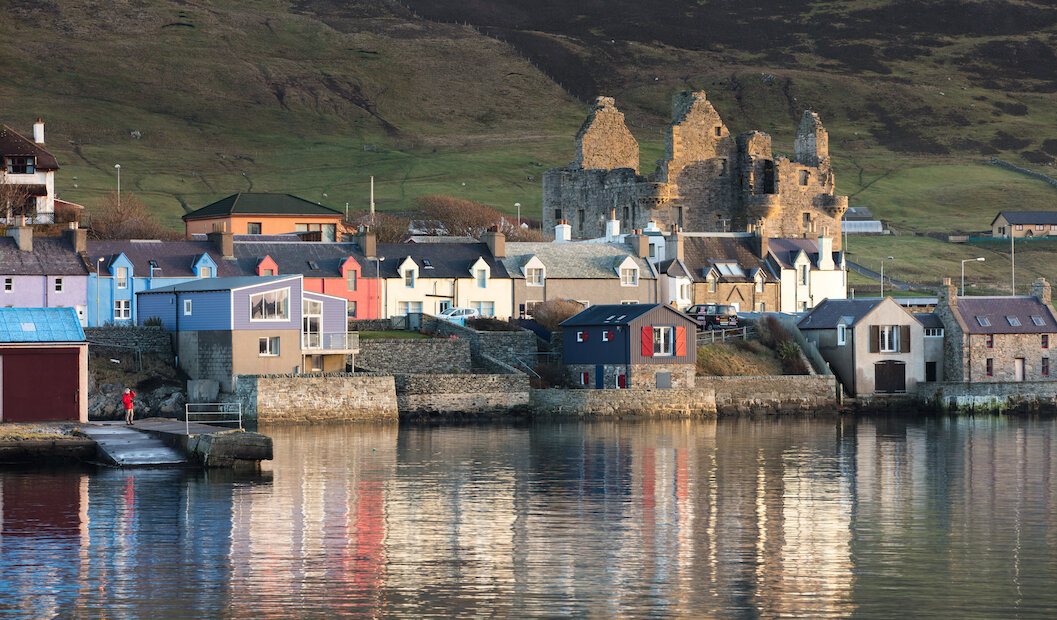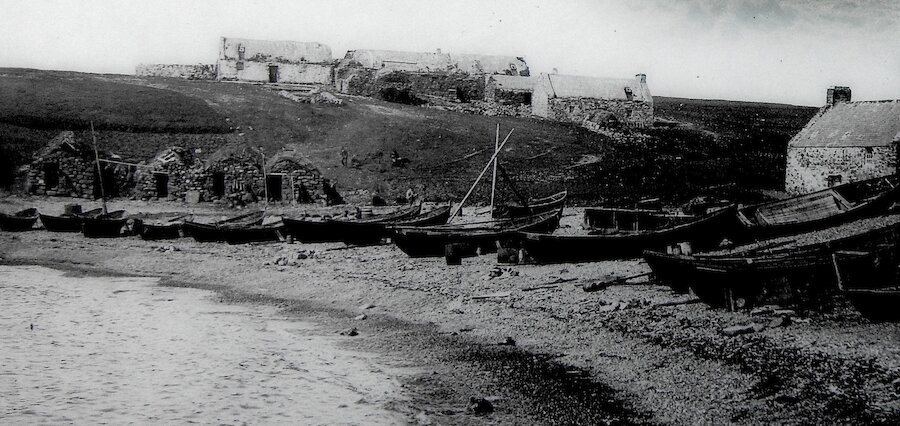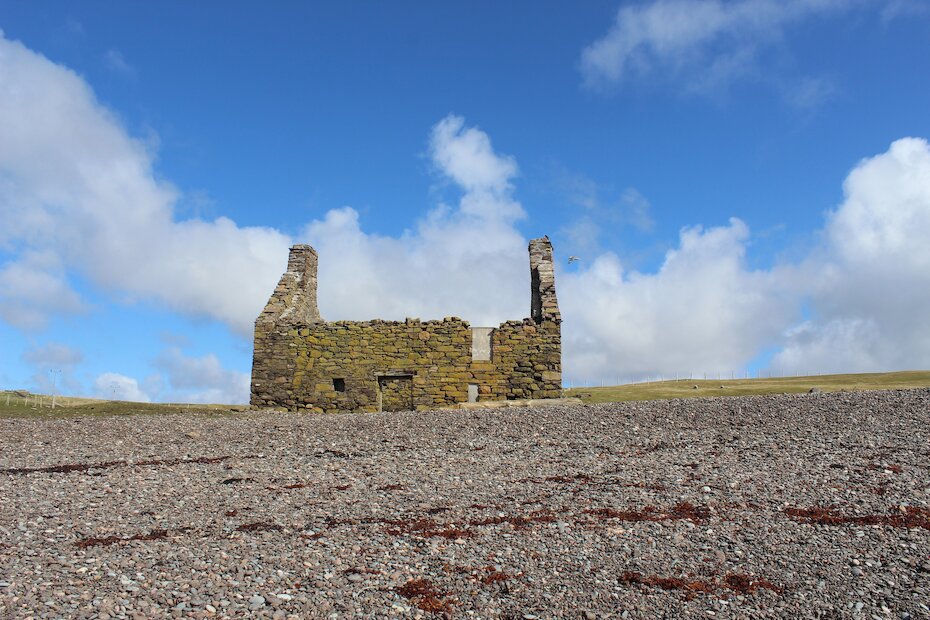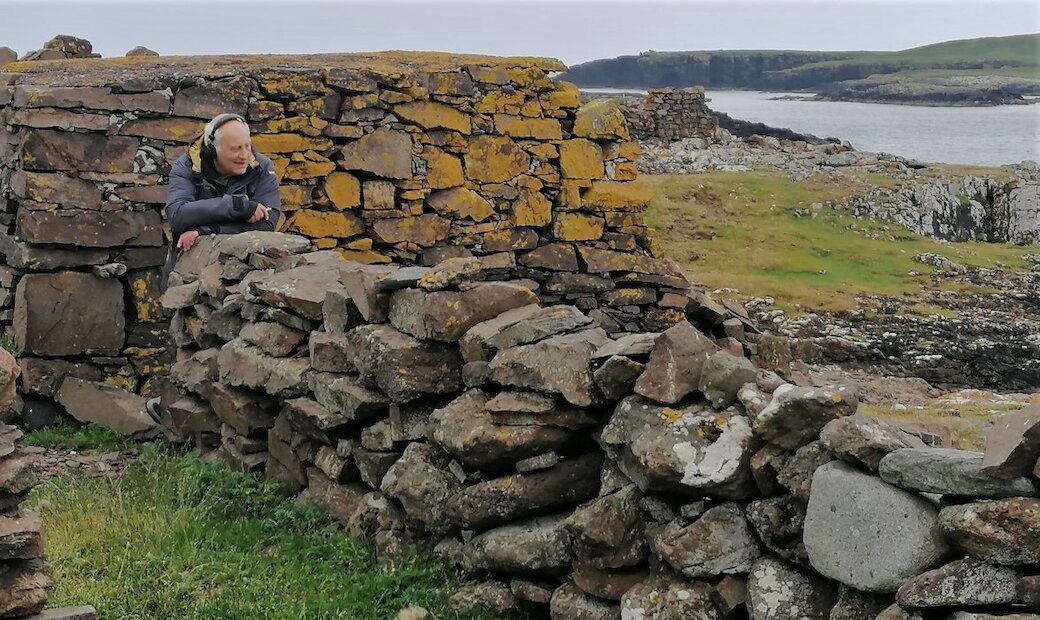The fact that Shetland has never been densely populated or intensively farmed means that many archaeological sites have survived across the centuries. This list highlights the most popular heritage sites for visitors but you'll find the remains of settlements and buildings scattered across Shetland, all with their own stories to tell.
Clickimin Broch
Clickimin Broch is in the heart of Lerwick on Clickimin Loch, which straddles the Old Town and Sound areas. Brochs are ancient stone round houses only found in Scotland. Clickimin is a terrific example and has evidence of settlement spanning over a thousand years. The broch itself is surrounded by other buildings said to date from the late Bronze Age. Very little else is known about Clickimin Broch, which makes it all the more intriguing!
The broch is easy to access and open all year round. Find out more on the Historic Environment Scotland website.
Location: South Road, Lerwick ZE1 0RD


